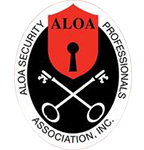Blog
If you’re new to the world of commercial locks, or would simply like some more detailed information about how they’re graded, you might find the following information useful:
What are commercial lock grades?
Before each type of lock is classified and certified, its quality and security level will be rigorously assessed according to:
- Function and application
- Strength
- Cycles (how many times a lock can be used before needing to be replaced)
- Security
- Material evaluation
- Finish
Evaluated in several ways, and using the above points as a guide, the ANSI/BHMA goes on to award the lock product a grade of 1, 2 or 3.
Grade 1 locks
This category is reserved for the strongest and most durable commercial locks; Grade 1 locks are heavy-duty, offer the highest level of security, and are expected to withstand twice the amount of use as a lock in the Garde 2 category.
Typically used on exterior doors and at high-traffic entry points, these locks are classified as safe to use on public buildings such as schools, healthcare facilities and other buildings with a large capacity.
Grade 2 locks
Rated for use on exterior access points of buildings with low to medium traffic, Grade 2 locks can also be used on interior doors that need a higher level of security, such as offices or rooms where valuable items such as merchandise, materials or equipment are stored.
Grade 3
Considered as standard level, Grade 3 locks are best suited for light applications, such as supply closets, offices not containing valuable items, employee break rooms or any other location that doesn’t experience high-traffic and doesn’t require a higher level of security. This particular grade is also deemed suitable for use in residential properties.
How can you check what level of protection a commercial lock offers?
Located on the product information sheet, original packaging or at the end of the product code, the ANSI/BHMA certification number tells you the grade of the lock; the numbering system also gives details as to the type of material used to make the lock, its category and the appropriate applications for it.
What do the terms ‘fail-safe’ and ‘fail-secure’ mean?
When it comes to commercial locks, the two terms refer to how the hardware on the outside, or keyed side of the door, operates and controls entry in the event of an emergency or power outage. Fail-safe means that the hardware automatically unlocks when there’s no power, while fail-secure describes hardware that automatically locks during a power outage.
Because fail-safe lock devices automatically unlock when the power is out or a fire alarm sounds, they are often considered to be a security risk for some commercial and industrial uses.
Whether a lock is fail-safe or fail-secure, occupants of a building must be able to leave the inside of a building quickly and safely in the event of an emergency, and unless otherwise stated by the manufacturer, or another keyed lock, double cylinder or deadbolt is used, all commercial locks allow for this.
To know more details about commercial locks and for help choosing the right grade for your needs, talk to a security expert such as a qualified locksmith.

